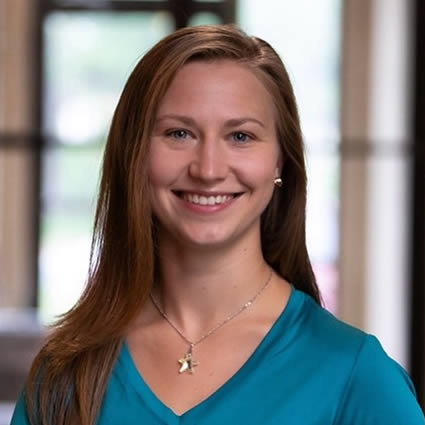Acupuncture at SouthWest Chiropractic

What is Acupuncture?
Acupuncture is the form of healthcare that is both a science and an art. It was developed over 5000 years ago traditionally in eastern medicine. Various needles or wires are inserted into specific body points to induce a desired effect. This can include pain reduction, immune enhancement, increased fertility, and improved digestion.
In the Western world, we use acupuncture in both the traditional and conventional setting. Acupuncture is primarily used for pain relief and inflammation reduction in conjunction with other methods of treatments such as Chiropractic, Physical Therapy, massage and medications.
Acupuncture is evidence-based medicine. Studies have shown a very specific physiological response to sustained needle insertion. With the insertion of this very thin wire, there is a stimulation of sensory fibers and the release of numerous opioid and non-opioid neurochemical and neurotransmitters. These include to name a few: serotonin, dopamine, norepinephrine, endorphins, enkephalins, nitric oxide and GABA. These neurochemicals have a sedating and anti-inflammatory effect. Another pathway known to reduce pain is the purinergic pathway which has a primitive and ubiquitous effect on the whole body by regulating cellular function. This explains why acupuncture has such a wide application.
Acupuncture has a direct effect on the CNS. It affects spinal reflexes, brain connectivity, especially the nervous system. It impacts hormone regulation by the way of the pituitary adrenals and hypothalamus. Acupuncture is also shown to stimulate the parasympathetic response in the body to help with stress, cognition, body illness and physical pain again supporting its wide application.
The ‘map’ on the body to determine what points to use is called the meridian (aka organ lines). These are lines of QI (chi) or energy. This is the body’s interstate system of transporting from within or from outside sources. The modern definition of these channels often follows major nerve pathways or fascial trains/lines in the body. There are over 1000 points all over the body. Very thin solid stainless-steel needles or wires are placed in the points using a guide tube. The procedure is virtually painless due to the finely tapered point and the thin gauge of the needle. Acupuncture points are placed along these channels in different combinations to produce the desired effect or response. There are 2 central meridians and 12 principal meridians covering the front, sides and back of the body. They start or end at the head, hands and feet.
What is acupuncture effective for?
As Chiropractors, we use acupuncture as an orthopedic application for pain and inflammation reduction in conjunction with neuromusculoskeletal treatment. Conditions that are treated with Orthopedic acupuncture include:
- Spine pain (neck, low back and pelvic pain)
- Extremity pain (knee, ankles, shoulders heel, plantar fascia, hands wrists, jaw)
- Lateral and medial elbow pain including wrist
- Chronic or acute nerve pain (including abdominal or pelvic pain)
- Post-surgical nerve pain from scar tissue
- Chronic or acute headache or migraine
- Pelvic or pubic pain from trauma, pregnancy
- Osteoarthritis in extremities or spine
- Neuropathy both chemotherapy and diabetes
- Restless leg syndrome and other leg pain
Generally, it takes an average of 6-8 treatments to achieve the desired result however it depends on the condition and the chronicity. The treatments are cumulative and are often accompanied by a positive sedating and balancing effect.
Dry needling uses the same type of needle as acupuncture and both are centered around pain and inflammation reduction. Dry needling is only musculoskeletal based. There is debate as to whether the sustained needle insertion with acupuncture has more of a long-term healing effect. The physiological response is generally the same in both however acupuncture can produce more systemic effects and there is a wide application. The theory surrounding acupuncture is the separation. The roots of acupuncture are ancient.
Meet Our Acupuncturist
Cassie Calendine, LAc
Trained in Traditional Chinese Medicine
 Cassie is a licensed and board certified acupuncturist with a Masters of Acupuncture degree from American Academy of Acupuncture & Oriental Medicine in Roseville, MN. She moved here from Ohio in 2017 to begin her studies in TCM. Other modalities Cassie integrates into her treatments include cupping, gua sha, and massage. She is also qualified to perform Microneedling, also known as collagen induction therapy.
Cassie is a licensed and board certified acupuncturist with a Masters of Acupuncture degree from American Academy of Acupuncture & Oriental Medicine in Roseville, MN. She moved here from Ohio in 2017 to begin her studies in TCM. Other modalities Cassie integrates into her treatments include cupping, gua sha, and massage. She is also qualified to perform Microneedling, also known as collagen induction therapy.
Integrates Multiple Modalities
Cassie incorporates cupping, gua sha, and massage into her treatments to maximize results. She is qualified to perform Microneedling, also known as collagen induction therapy.
Addressing all body systems, acupuncture not only treats acute or chronic pain, such as back pain, neck pain and headaches but can also be a great remedy for fertility, digestive health, anxiety, depression, stress management and more.
Hobbies and interests
She enjoys being active, especially in the summer. Weight lifting, running, camping, rock climbing, paddle boarding, and hiking.
Conclusion
Acupuncture has a wide range of application for local musculoskeletal conditions, systemic-visceral and mental conditions. In the contemporary healthcare setting, it is used with medicinal intervention to improve patient outcomes. Patients who do not respond to traditional care benefit from the treatment.
CONTACT US

